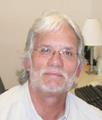It is my pleasure to introduce and provide an overview for the next Centre for Addictions Research of BC theme in the Matters of Substance blog series. This upcoming theme is succinctly and provocatively entitled, Sex and Drugs. Our contributors will look at the intersection between substance use, sexual behaviour, pleasure and risk from a variety of perspectives and in a broad set of contexts. While all blogs are based on empirical data, authors also consider emerging theories attempting to explain substance use-sexual behaviour linkages.
Scanning upcoming blog titles I discern at least two major themes corresponding to current research on this topic. The first examines the relationship between sexual behaviour and the rationale for, and consequences of, associated substance use, while the second examines patterns and levels of substance use by sexual orientation. Upcoming blogs in the first theme examine the role of stigma in sex workers’ substance use patterns, the relationship between stimulant use and sexual compulsivity, also called sexual addiction, among gay and bisexual men (GBM), the advent and adoption of “sex drugs”, both legal and non-mood-altering (e.g. erectile dysfunction drugs such as Viagra®) and illicit and psychoactive (e.g. amyl nitrates or poppers) used to heighten sexual performance and/or pleasure, the role of drugs at GBM group sex parties, linkages between smoking and HIV, and a site-specific example of substance use and sexual behaviour in remote labour-based sites.
In the second theme, blogs examine linkages between substance use and sexual patterns for gay, bisexual, lesbian and transgendered populations. In doing so, they utilize a variety of Canadian data bases, including the SEX NOW national survey for GBM, the Centre for Addiction Research of BC’s High Risk Population Surveys, and a sample of transgendered men enrolled in the Vancouver Momentum Health Study for GBM.
Some upcoming blogs focus on defining and delineating levels and patterns of substance and sex related risk. At the same time, contributors are also cognizant of the far less discussed research topic of rewards, whether real, or just as importantly perceived, linking substance use with sexual behaviour. An excellent recent example of this was provided the Lorvick et al. (2013) study reporting San Francisco women’s perceptions of increased desire, power, and agency experienced when combining methaphetamine use with unprotected vaginal intercourse. Such studies emphasize that researchers today must recognize “sex positive” as well as “sex negative” aspects of substance use to fully understand this relationship. With this in mind, I invite you to follow our Sex and Drugs blog series, and to share with us your thoughts about the materials presented here.
Author: Dr. Eric Roth, Scientist, Centre for Addictions Research of BC; Professor, Department of Anthropology, University of Victoria
**Please note that the material presented here does not necessarily imply endorsement or agreement by individuals at the Centre for Addictions Research of BC


